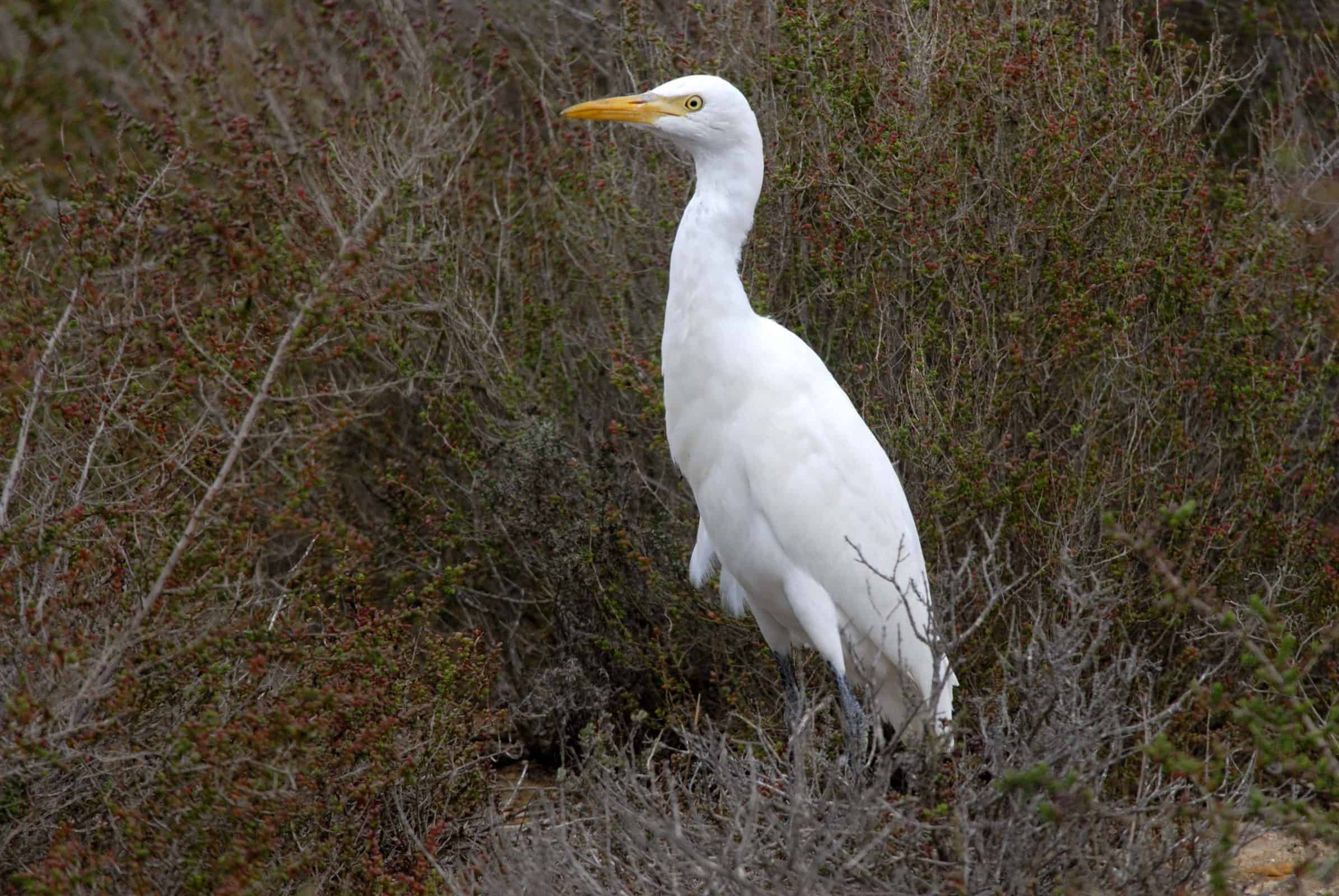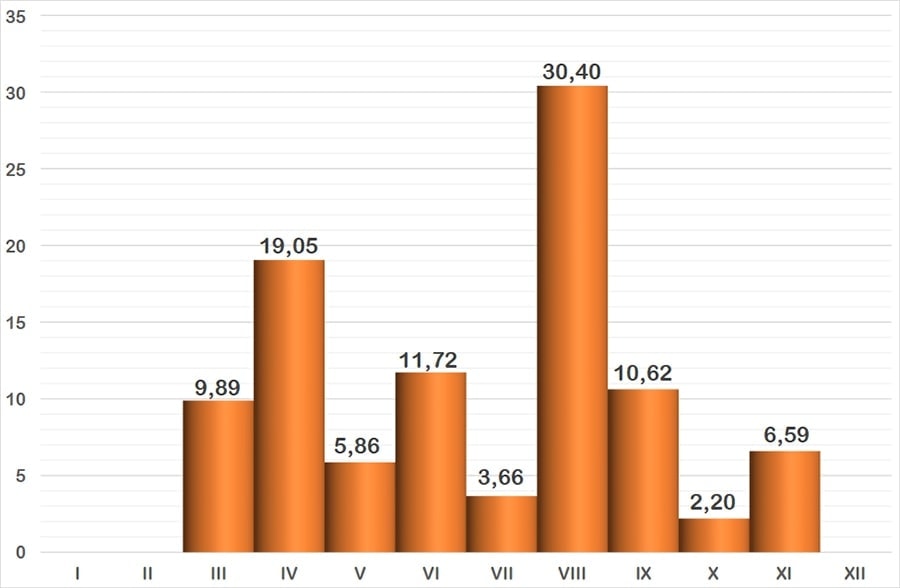This heron very identifiable by its white plumage, dark legs and yellow bill, in the mating season it acquires striking yellow-orange feathers on its head, on the nape, back, and the legs also acquire this colour during the summer. It is a medium to small size and its short robust neck gives it a stubby appearance.

Species 1
Cattle Egret
Scientific name
Family 2
Taxonomic Affinity Group 3
Phenology 4
Nesting in nearby colonies, in Roquetas de Mar, it has a complementary presence. While in Ribera de la Algaida it is a wintering bird, in the Salinas de Poniente it is a summer bird, present almost all year round, except in winter. The link in the latter localities to the breeding areas can be reflected in the probability of observation, where the greatest variation is shown in the postbreeding season with the movements of breeding birds and their offspring.

The graph represents the probability of seeing a species during the year, grouped into months. The vertical axis indicates the percentage value. Each of the bars expresses its value. The horizontal axis represents the months: I = January, II = February, III = March, IV = April, V = May, VI = June, VII = July, VIII = August, IX = September, X = October, XI = November and XII = December.
Observation recommendations
In the Poniente salt marshes they are not observed in winter because the species has large roosts in other wetlands and also has a behaviour that makes them search for food outside the wetlands, in fact, its name alludes to the link it has with livestock, which it follows to capture large insects and small reptiles that are startled by the cattle as they pass by. Curiously, in other places they are called “Espulgabueyes” or ‘Ox delouser’, because they use them as a watchtower to capture prey and even to capture insects that swarm on their skin. They can be seen feeding in Cerrillos and taking refuge in the reed beds in other areas.
Observation areas where we can find it
Notes
[1] The names used are from the list of birds of Spain, drawn up by SEO/BirdLife and updated to 2019 (https://seo.org/listaavesdeespana/). The reference is: Rouco, M., Copete, J. L., De Juana, E., Gil-Velasco, M., Lorenzo, J. A., Martín, M., Milá, B., Molina, B. & Santos, D. M. 2019. Checklist of the birds of Spain. 2019 edition. SEO/BirdLife. Madrid.
[2] The taxonomic family to which it belongs is indicated.
[3] Traditionally, waterbirds have been grouped according to their taxonomy or “taxonomic affinity”, i.e., when some birds coincide in certain features that allow them to be classified scientifically, but without leaving the rigour of science, they are put together in these groups so that they can be easily recognised. These groups are the following: Greves (belonging to the Podicipedae family), Herons and Similar (includes the families: Ardeidae -Herons- Ciconiidae -Storks- and Threskiornithidae -Ibises and spoonbills-), Ducks (the whole Anatidae family), Coots and Similar (the family Rallidae corresponding to Rails, Gallinules and Coots), Cranes (also with only one family, the Gruidae), Waders , a heterogeneous group, the most diverse of this classification, includes the families Burhinidae (Stone-curlews), Haematopodidae (Oystercather), Recurvirostridade (Avocets and Stilts), Glareolidae (Pranticole), Charadriidadea (Plovers), Scolapacidae and finally Gulls and Similar (the recently unified family Laridae, i.e. Gulls and Terns).
[4] Phenology studies the relationship between the cycles of living beings and meteorological factors, and in our latitude these factors manifest themselves as variations throughout the year, thus relating the seasons to the birds’ cycles (breeding, migratory journeys, etc.) The graph shows the probability of seeing a bird depending on the month. It uses data from 48 bird censuses carried out between October 2016 and September 2018. The method used is that of a census route with sampling stations, with a total count on the sheet of water.
